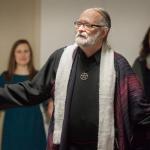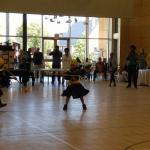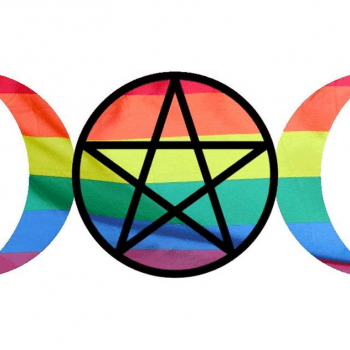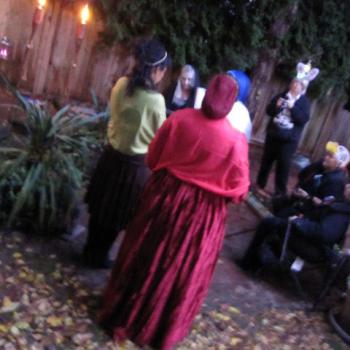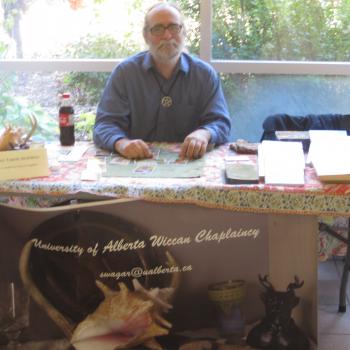How to Choose What to Include?

The Lore of a group develops ideologically – we choose which things to add and to emphasize based on what we already believe and do rather than by an unbiased consideration of these new items. This isn’t always a bad thing because it results in a deeper and more complex exploration of issues and ideas, unless the group or individual does not realize that is what they are doing and mistakes their biases for objectivity.
An unfortunate tendency to note here is the anti-modern reaction that underlies a great deal of popular folklore – this nostalgia for a never-never land before class struggle or racism, or the exploitation of the peasantry and the conquered peoples by the dominant groups and the cities, some fantasy of bucolic harmony, a pure and naïve time long ago. This time never existed outside of fantasy novels and the Society for Creative Anachronism – there has always been class struggle, sexism, warfare, conquest and the rest of it. This nostalgia instead of research results in highly partial and selective scholarship, collections of folk songs and tales that are pre-Bowdlerized to suit the desire of the collector for this kind of a unrealistic life – as Ian McKay demonstrated when he revisited Helen Creighton’s famous collections of Nova Scotia folksongs and stories with an eye to what was deliberately not collected by her (labour songs and bawdy songs for two categories) and the creation of the myth of Nova Scotia as a principally Scottish area.
A related problem is the creation of the “authorized real folklore list” – like the Childe ballads predetermining what is real folksong, or the very selective and rewritten collections of the Grimm Brothers representing the authentic German folk story and so on. I won’t multiply examples endlessly or belabor my point – what we create is both authentic in its own right and also likely shaped by our ideological biases.

An easy divergence to see that is based on ideology is that between women-only groups and those including both sexes or among the different ethnic Reconstructionist groups. Less obvious but also real are those groups which diverge around sexual preference or gender norms or ages, or racism. The boundaries are usually not policed heavily but they are obvious if one looks and can become very strong when a group has a charismatic leader or a strong external threat. Then, preferences can change to dogmatic requirements.
Also, popular, charismatic and Talented individuals can have entirely disproportionate influence if their ideas and work are taken up and used by a large number of people in the movement. It is not a quality judgment to see that at this point in time in the Pagan communities the work of Silver RavenWolf is more influential than Christopher Penczak, as an example. In my opinion, Penczak is a superior writer and thinker. But the lore of at least one large fraction of the Wicca-identified movement owes more to RavenWolf, another draws strongly from Starhawk and the Reclaiming and Feri traditions and so on. And ultimately Wicca owes a tremendous debt to Aliester Crowley and the OTO and the Hermetic Order of the Golden Dawn on the one hand and Madam Blavatsky and the Theosophical Society on the other. Layers of lore build on one another, branch, and recombine.
The centre of Wicca must remain the Mysteries and Inner Court in my opinion, not the Outer Court groups – that mystical path of direct connection with the divine, not the casual drop in groups that show up at Temple meetings from time to time, or the I Read A Book instant Priestesses. But, just as the external forms and practices of different groups change with the changing lore, so do the Mysteries that they centre themselves on. Because a group differs from me or from you, does not necessarily mean that it has no substantial core to it.

In the Wicca-identified Paganisms, there are already several such bodies of lore and sets of Mysteries, which overlap but which are distinct. Those inside these specific communities can use these bodies of lore more effectively to accomplish spiritual connection and achieve goals for themselves than those outside. People read the same books and practice in the same way – what is usually happening is adaptation and variation of themes and the addition of related sources within established bodies of lore rather than the creation of brand new ways of doing things. This, I believe, is a very good thing, since brand new things are superficial matters of style until a number of people have been able to work with the new body of lore and deepen it. People inside each of the factions often assume, however, that their particular faction’s lore and approach to it is the common agreed upon norm for the entire religious movement, receiving a bit of a rude shock when venturing out into the wider world (particularly true of those factions centred on the all-wise charismatic leader and her mastery of the Secret Lore).
Previously: http://admin.patheos.com/blogs/translatingworlds/2018/05/building-a-body-of-lore/
Next Week “Creating One’s Own? ”

